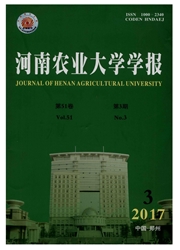

 中文摘要:
中文摘要:
为研究新近发现的人兽共患隐孢子虫种兔隐孢子虫的生物学特性.基于显微镜观察,自然宿主和试验动物宿主特异性,病理组织学观察等方面进行研究.结果发现,兔隐孢子虫可成功感染日本大耳白兔和免疫抑制蒙古沙鼠,而未免疫抑制蒙古沙鼠、免疫抑制BABL/c小鼠、免疫正常BABL/c小鼠和雏鸡均未发现感染.不同剂量卵囊接种30日龄兔后,潜隐期为4~5d,显露期6~11d,各感染组兔均未出现腹泻症状;90日龄兔和免疫抑制组蒙古沙鼠接种2.0×10^5个卵囊后,潜隐期均为5d,显露期分别为7,5d,未表现临床症状.组织学观察可见,兔隐孢子虫在兔和蒙古沙鼠体内的寄生部位均为空肠和回肠,虫体寄生部位肠绒毛脱落或变短.
 英文摘要:
英文摘要:
To study the biological characterization of the newly emerging zoonotic Cryptosporidium cuniculus the morphology, natural and experimental host specificity, and histological examination were investigated. The results showed that experimental infections have been established in Japanese White Rabbit and immunosuppressed Mongolian gerbil, but not in normally immuned Mongolian gerbil, immunosuppressed BABL/c mice, normally immune BABL/c mice and chickens. Different dosage of C. cuniculus oocysts were respectively inoculated to 30-day-old rabbits, and the latent period and the patent period was 4 to 5 days and 6 to 11 days, respectively. No diarrhea was noticed in each rabbit. 2 × 10^5 oocysts of C. cuniculus were infected to 90-day-old rabbits and immunosuppressed Mongolian gerbil, the latent period was all 5 days, and the patent period was 7 days and 5 days, respectively, with the absence of clinical signs. Histological examination showed the parasites were located in the jejunum and ileum, with the intestinal villi being atrophied or desquamated.
 同期刊论文项目
同期刊论文项目
 同项目期刊论文
同项目期刊论文
 期刊信息
期刊信息
